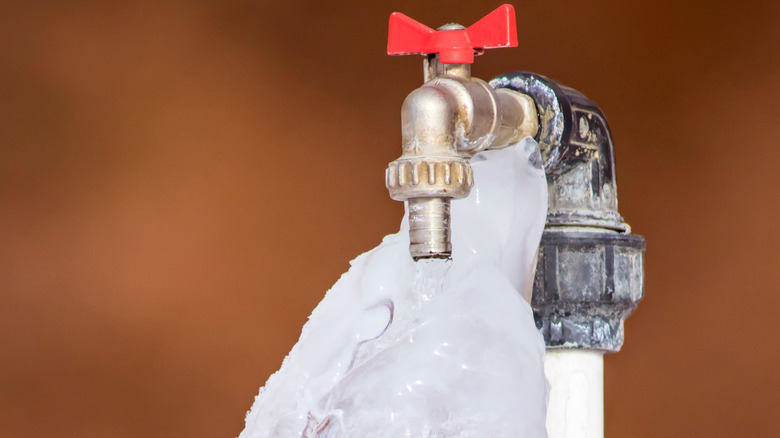This post further down on the subject of Prevent Frozen Pipes is incredibly compelling. Give it a try and draw your own conclusions.

Cold weather can ruin your plumbing, specifically by freezing pipelines. Right here's exactly how to prevent it from happening and what to do if it does.
Intro
As temperature levels decline, the threat of frozen pipelines increases, possibly leading to expensive repair services and water damages. Recognizing just how to avoid frozen pipelines is important for property owners in cool climates.
Understanding Frozen Pipelines
What triggers pipelines to freeze?
Pipelines freeze when subjected to temperatures below 32 ° F (0 ° C) for expanded periods. As water inside the pipelines ices up, it expands, taxing the pipeline walls and potentially creating them to break.
Risks and damages
Icy pipelines can lead to water system disturbances, home damages, and costly fixings. Ruptured pipelines can flooding homes and create considerable architectural damages.
Signs of Frozen Pipeline
Determining frozen pipes early can avoid them from rupturing.
Exactly how to identify frozen pipelines
Look for lowered water circulation from taps, unusual odors or noises from pipelines, and noticeable frost on subjected pipes.
Prevention Tips
Protecting at risk pipelines
Cover pipelines in insulation sleeves or use warmth tape to shield them from freezing temperature levels. Focus on pipelines in unheated or external locations of the home.
Home heating techniques
Maintain interior spaces sufficiently heated, particularly areas with plumbing. Open cabinet doors to allow warm air to flow around pipelines under sinks.
Shielding Exterior Plumbing
Garden hoses and exterior taps
Detach and drain yard pipes before winter season. Install frost-proof faucets or cover outdoor taps with protected caps.
What to Do If Your Pipes Freeze
Immediate activities to take
If you presume frozen pipelines, keep taps open to soothe pressure as the ice thaws. Utilize a hairdryer or towels taken in hot water to thaw pipelines slowly.
Long-Term Solutions
Architectural adjustments
Think about rerouting pipelines away from outside wall surfaces or unheated areas. Include additional insulation to attics, basements, and crawl spaces.
Upgrading insulation
Invest in top quality insulation for pipes, attic rooms, and wall surfaces. Correct insulation assists preserve consistent temperatures and lowers the threat of frozen pipes.
Verdict
Protecting against icy pipes requires aggressive procedures and fast responses. By understanding the causes, indicators, and safety nets, homeowners can secure their pipes during winter.
6 Proven Ways to Prevent Frozen Pipes and Protect Your Home
Disconnect and Drain Garden Hoses
Before winter arrives, start by disconnecting your garden hoses and draining any remaining water. Close the shut-off valves that supply outdoor hose bibs and leave the outdoor faucet open to allow any residual water to drain. For extra protection, consider using faucet covers throughout the colder months. It’s also important to drain water from any sprinkler supply lines following the manufacturer’s directions.
Insulate Exposed Pipes
Insulating your pipes is an effective way to prevent freezing. Pipe insulation is readily available at home improvement stores and is relatively inexpensive. Pay close attention to pipes in unheated areas such as the attic, basement, crawl spaces, or garage. Apply foam insulation generously to create a buffer against the cold. You can also wrap your pipes in heat tape or thermostat-controlled heat cables for added warmth.
Seal Air Leaks
Inspect your home for any cracks or openings that could let in cold air. Seal any holes around the piping in interior or exterior walls, as well as the sill plates where your home rests on its foundation. Additionally, make sure to keep your garage door closed unless you’re entering or exiting. Leaving it open creates a significant air leak that can lead to frozen pipes.
Allow Warm Air Circulation
During cold snaps, it’s essential to allow warm air to circulate evenly throughout your home. Leave interior doors ajar to promote better airflow. Open kitchen and bathroom cabinets to help distribute heat consistently around the rooms. If you have small children or pets, be sure to remove any household chemicals or potentially harmful cleaners from open cabinets for safety.
Let Faucets Drip
A small trickle of water can make a big difference in preventing ice formation inside your pipes. When temperatures drop significantly, start a drip of water from all faucets served by exposed pipes. This continuous flow helps prevent the water from freezing. Additionally, running a few faucets slightly can relieve pressure inside the pipes, reducing the chances of a rupture if the water inside does freeze.
https://choateshvac.com/6-proven-ways-to-prevent-frozen-pipes-and-protect-your-home/

As a devoted reader about How to prepare your home plumbing for winter weather, I was thinking sharing that editorial was a smart idea. Loved our write up? Please share it. Let other people check it out. Thanks for going through it.
Contact Us Today